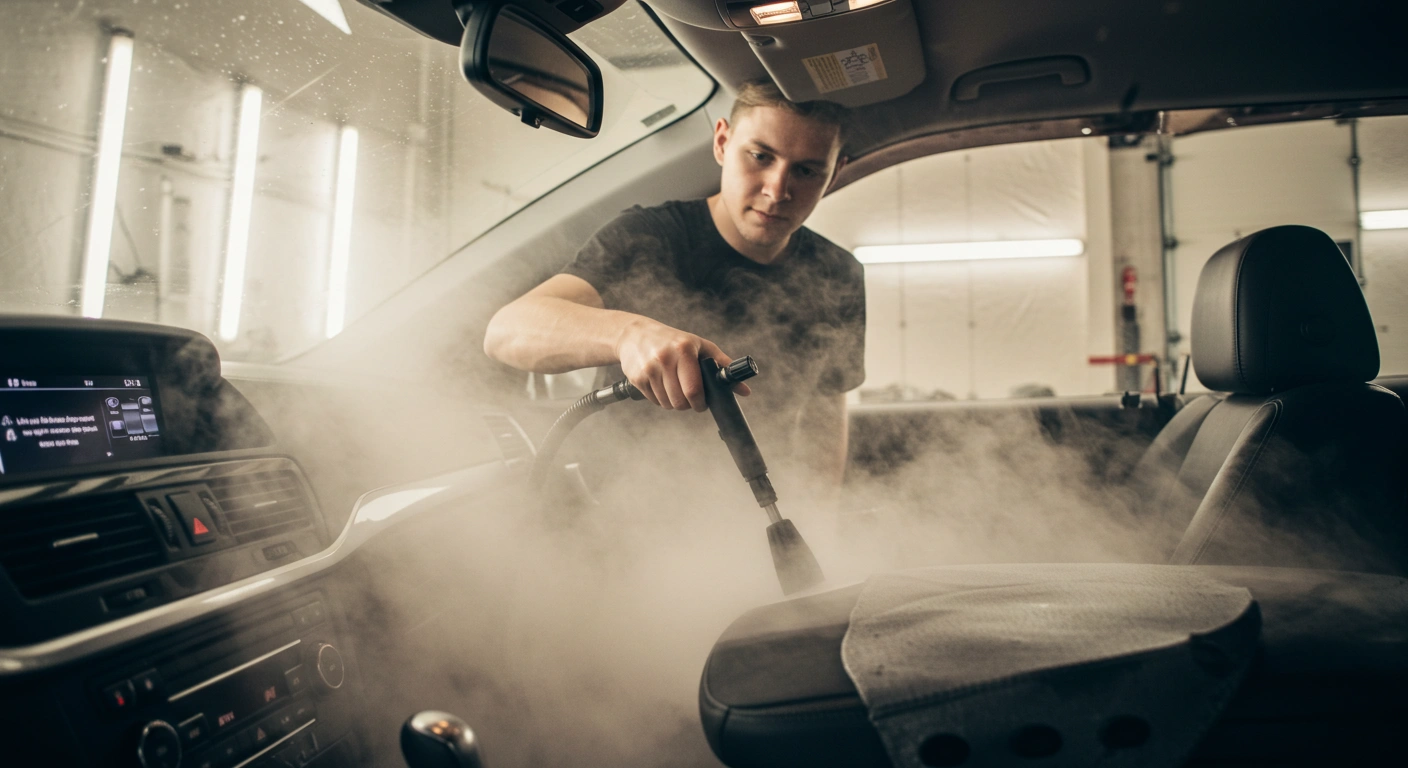08. 28. 2025
How to Clean Car Seats?

7 Ways to Clean Car Seats
A vacuum cleaner equipped with a crevice attachment can be invaluable for cleaning the seams of a car seat and extracting any dust that’s hard-to-reach places, such as between buckle tongues or chest clip latches. A toothbrush may also come in handy.
Before using any commercial cleaner, always test an inconspicuous area to make sure it won’t discolor fabric. When using bleach-based solutions, be sure to rinse thoroughly afterwards.
1. Vacuum
Utilizing a vacuum cleaner to thoroughly clean your car seats can be an efficient and effective way to eliminate dust, dirt and pet hair from accumulating on them. The best hand vacuums designed specifically for cars typically feature attachments designed to tackle various surfaces and hard-to-reach spaces like between seat cushions or cupholders.
Before vacuuming, it’s essential to pre-treat any stains with white vinegar or another commercial fabric-safe product in order to keep fabric upholstery looking its best. Once vacuuming has concluded, allow car seats to air-dry completely in order to avoid mildew or bad odors from developing.
2. Vinegar
Vinegar can be an affordable and effective way to remove stains, odors and debris from your car seat. Simply combine baking soda and vinegar in order to form a paste and apply directly onto stained areas – leave for several minutes then scrub away with a brush!
Be careful when cleaning your car seat that you do not scratch its shell or handles, as this could damage them and compromise their condition. Use a soft-bristled brush, and test any cleaner on an inconspicuous area before applying it directly onto your seat.
If your seat features a removable fabric cover, please consult its care instructions to see if machine washing can be safely undertaken. Most manufacturers advise using only cold or warm water when doing this in order to preserve flame retardant materials found within padding and fabric covers.
3. Baby Shampoo
For deeper cleans, most cloth fabric child seats can be submerged in baby shampoo to dissolve stains or spills that cannot be easily removed by dry absorbent cloth.
Always follow the manufacturer’s recommendations when applying car seat shampoo products, or they could lead to reduced tensile strength threads that could result in accidents due to accident-induced failure of harness.
Before you begin shampooing, be sure to thoroughly vacuum the seat. Next, dampen it using a clean sponge or brush and follow the directions on the product packaging for applying shampoo.
Once rinsed out, allow your seat to air dry naturally – or open windows and use fans if necessary to expedite it further if required – before reattaching buckles and straps and reinstalling according to manufacturer guidelines.
4. Toothbrush
The first step to cleaning car seats involves sucking up dirt and dust that could scratch and degrade fabric covers, using vacuum attachments tailored specifically for tight spaces or seams of fabric covers.
First, identify the fabric on your car seat and conduct a pre-clean test in an inconspicuous area before beginning to clean the actual seat itself. Most fabric car seats are constructed from polyester or cotton materials which require different cleaning approaches than leather seats.
Stains on fabric car seats must first be pretreated with either white vinegar or an effective commercial pretreatment solution before wiping them away with soap and water solution. Be mindful not to oversaturate the upholstery as too much moisture could lead to mildew and mold growth, threatening its durability.
5. Microfiber Cloth
Microfiber cloth can do wonders to revive fabric seats. Begin by vacuuming thoroughly, followed by the use of the crevice tool to access cracks and seams.
Follow your product’s instructions when applying cleaning solution, testing inconspicuously first to see the ideal ratio between water and cleaning solution. A spray bottle may help simplify application, although be wary not to oversaturate the seat as this can lead to mildew growth.
6. Laundry Detergent
Laundry detergent can be an excellent way to get stubborn stains off of fabric car seats. Just use a small amount and gently work it over the stain with a brush – too much moisture could cause mold and bacteria growth!
Bicarbonate of soda and water can also be combined to form a paste to treat spots or unpleasant odors on car seats, leaving it on for about half an hour before rubbing and wiping away.
Always apply a fabric protector after cleaning to create an invisible barrier against future dirt build-up; your owner’s manual or manufacturer website may offer specific cleaning instructions tailored specifically for your seats and upholstery type.
7. Water
Before beginning to clean a fabric seat, start by clearing away any solid debris with a vacuum and vacuum cleaner. Next, if your padding and fabric can be machine-washed according to manufacturer recommendations.
Prior to using any cleaning solution on upholstery, always test a small inconspicuous area first in order to make sure it won’t discolor or damage fabric. Also take caution not to oversaturate fabric as this could cause mildew growth.
To remove stubborn stains, consider carbonated water–specifically club soda–instead of harsh machine washing methods. Dab a cloth soaked in this solution onto the stain before rinsing and air drying it after. Harness straps contain delicate fibers which could be damaged by harsh spin cycles of washers; instead try handwashing instead for best results.
Conclusion
Keeping your car seats clean not only improves the overall appearance of your vehicle but also extends the life of your upholstery. With a little effort and the right techniques, your car seats can stay fresh, spotless, and comfortable for the long haul.


No Comment Yet! You can post first response comment.